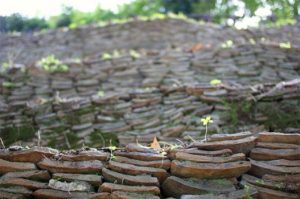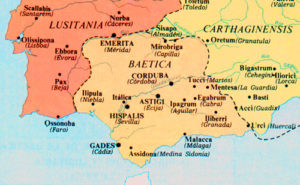In 1878 Heinrich Dressel, a German archaeologist, discovered that the hill Testaccio was made of amphorae fragments used for the transportation of olive oil, mostly coming from Hispania. The Testaccio is a 30-meter hill on the left side of the river Tiber near the port of Rome.
The amphorae reached the port of Rome, where its contents were emptied and broken into pieces. The remains pieces were deposited in Hill Testaccio, then lime was spread on those pieces to avoid bad odors. It was not profitable to wash the containers and send them back to Bética and other regions.

It is estimated that Hill Testaccio has stored approximately 26 million of amphorae in little more than a century, from year 138 to 260 of our era. This data indicates that in the ancient world the amount of olive oil consumed annually per person was bigger than today.
Olive Oil, due to its high demand and high price, was used in the ancient Mediterranean world as currency and trading product. For the very same reason, it was used to collect taxes and pay wages.
Dressel’s findings exposed the basis of the economy market of ancient Rome, among many other things, contributing with new and unpublished data to the knowledge of the economic history of the Roman Empire and its provinces.
He discovered that the vast majority of the amphorae extracted from the hill came from the Province of Baetica (about 80% of the total) in Hispania and that these amphorae had been used for the transportation of olive oil.

Roman ships engaged in the transport of food used the amphora, which was especially practical for hauling olive oil. The amphora weighed about 30 kg and was capable of transporting about 70 liters of oil.


“muchas gracias por el artículo, me ha sido muy útil.”